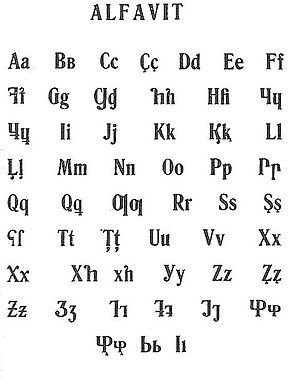A, or a, is the first letter and the first vowel letter of the Latin alphabet, used in the modern English alphabet, the alphabets of other western European languages and others worldwide. Its name in English is a, plural aes. It is similar in shape to the Ancient Greek letter Alpha, from which it derives. The uppercase version consists of the two slanting sides of a triangle, crossed in the middle by a horizontal bar. The lowercase version can be written in two forms: the double-storey a and single-storey ɑ. The latter is commonly used in handwriting and fonts based on it, especially fonts intended to be read by children, and is also found in italic type.

The Cyrillic script, Slavonic script or simply Slavic script is a writing system used for various languages across Eurasia. It is the designated national script in various Slavic, Turkic, Mongolic, Uralic, Caucasian and Iranic-speaking countries in Southeastern Europe, Eastern Europe, the Caucasus, Central Asia, North Asia, and East Asia, and used by many other minority languages.
O, or o, is the fifteenth letter and the fourth vowel letter in the Latin alphabet, used in the modern English alphabet, the alphabets of other western European languages and others worldwide. Its name in English is o, plural oes.
R, or r, is the eighteenth letter of the Latin alphabet, used in the modern English alphabet, the alphabets of other western European languages and others worldwide. Its name in English is ar, plural ars, or in Ireland or.
S, or s, is the nineteenth letter in the Latin alphabet, used in the modern English alphabet, the alphabets of other western European languages and others worldwide. Its name in English is ess, plural esses.
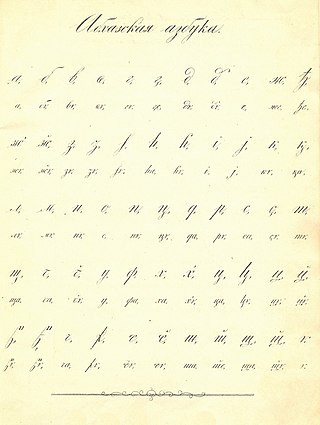
The Abkhaz alphabet is a Cyrillic alphabet used for the Abkhaz language.
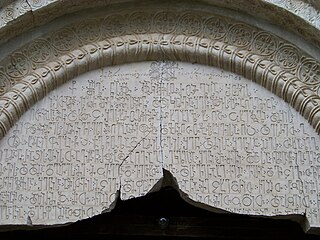
The Georgian scripts are the three writing systems used to write the Georgian language: Asomtavruli, Nuskhuri and Mkhedruli. Although the systems differ in appearance, their letters share the same names and alphabetical order and are written horizontally from left to right. Of the three scripts, Mkhedruli, once the civilian royal script of the Kingdom of Georgia and mostly used for the royal charters, is now the standard script for modern Georgian and its related Kartvelian languages, whereas Asomtavruli and Nuskhuri are used only by the Georgian Orthodox Church, in ceremonial religious texts and iconography.
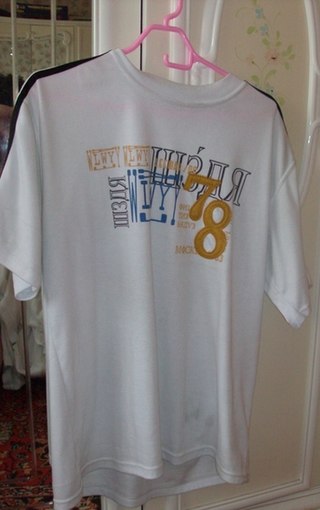
Faux Cyrillic, pseudo-Cyrillic, pseudo-Russian or faux Russian typography is the use of Cyrillic letters in Latin text, usually to evoke the Soviet Union or Russia, though it may be used in other contexts as well. It is a common Western trope used in book covers, film titles, comic book lettering, artwork for computer games, or product packaging which are set in or wish to evoke Eastern Europe, the Soviet Union, or Russia. A typeface designed to emulate Cyrillic is classed as a mimicry typeface.

Schwa is a letter of the Cyrillic script, derived from the Latin letter schwa. It is currently used in Abkhaz, Bashkir, Dungan, Itelmen, Kalmyk, Kazakh, Kurdish, Uyghur and Tatar. It was also used in Azeri, Karakalpak, and Turkmen before those languages switched to the Latin alphabet. The Azeri and some other Latin-derived alphabets contain a letter of identical appearance (Ə/ə).
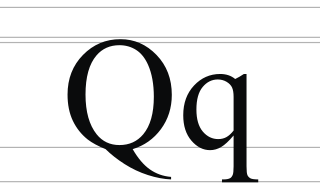
Qa is a letter of the Cyrillic script. Its form is based on the Latin letter Q (Q q). Depending on the font, the uppercase form can look like a reversed Cyrillic letter Р, with the lowercase form also resembling a reversed Cyrillic letter Р.

Ha or He is a letter of the Cyrillic script. Its form is derived from the Latin letter H, but the capital forms are more similar to a rotated Cyrillic letter Che or a stroke-less Tshe because the Cyrillic letter En (Н н) already has the same form as the Latin letter H.
L, or l, is the twelfth letter in the Latin alphabet, used in the modern English alphabet, the alphabets of other western European languages and others worldwide. Its name in English is el, plural els.
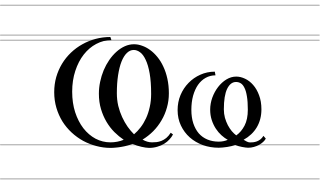
O-hook is a letter of the Cyrillic script. It is derived from the initial form of the Arabic letter hāʾ, ⟨ھ⟩. In the Unicode text-encoding standard, this letter is called "Abkhazian Ha". Its form bears some similarities to the Greek letter Theta (Θ θ/ϑ). In English, O-hook is commonly romanized using the Latin letter O with dot below (Ọ ọ) but its ISO 9 transliteration is the Latin letter O with grave accent (Ò ò).

Zhe with breve is a letter of the Cyrillic script created by Soviet linguists for the cyrillization of non-Slavic languages. Its form is derived from the Cyrillic letter Zhe by an addition of a breve.

Te with descender is a letter of the Cyrillic script. Its form is derived from the Cyrillic letter Te by the addition of a descender to the leg of the letter.

The Latin letter K with descender is a Latin letter.

The Zaghawa or Beria alphabet, Beria Giray Erfe, is an indigenous alphabetic script proposed for the Zaghawa language of Darfur and Chad.

Turned H is an additional letter of the Latin alphabet, based on a turned form of H. It is used in the Dan language in Liberia. Its lowercase form is used in the International Phonetic Alphabet to represent the voiced labial–palatal approximant. It was also historically used in the Abaza, Abkhaz, and the Vassali Maltese alphabet.

Reversed ge is an additional letter of the Latin script which was used in the writing of the Abkhaz language from 1928 to 1938, in the Abaza language, in the Kabardian language, in the Shiddin language and in the Udi language.

![]()
![]() ) is a letter of the Latin script which was used in the orthographies of the Abkhaz and the Abaza languages.
) is a letter of the Latin script which was used in the orthographies of the Abkhaz and the Abaza languages.
